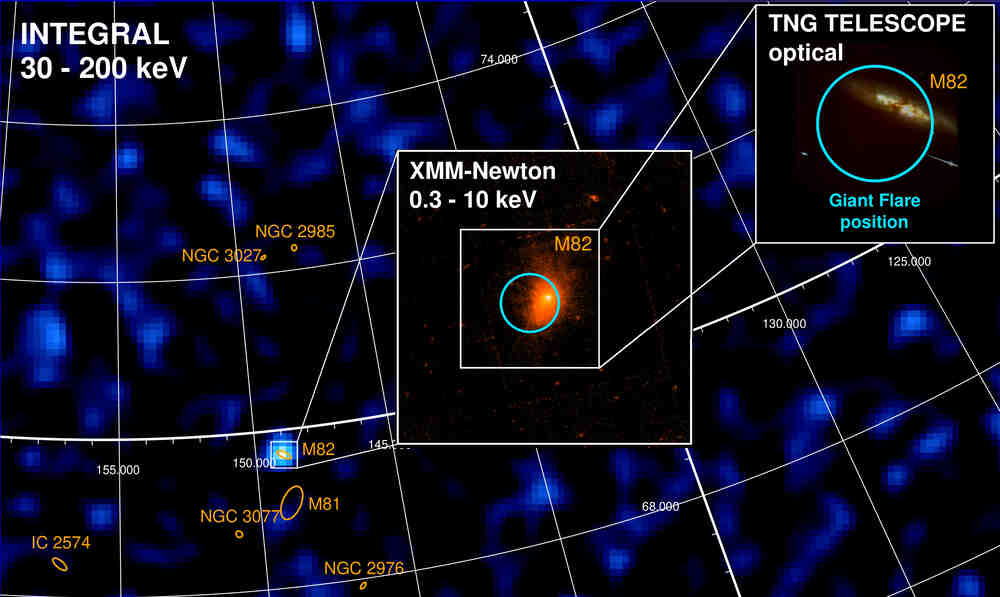University of Geneva researches a massive magnetic star eruption that is illuminating a nearby galaxy

A groundbreaking discovery has been made by the University of Geneva in a recent publication concerning the eruption of a mega-magnetic star that illuminated a neighboring galaxy. An international team of researchers, including UNIGE researchers, identified a rare cosmic phenomenon involving an extremely magnetic neutron star,known as a magnetar. The observational data was collected by the European Space Agency's (ESA) satellite, INTEGRAL, which detected a burst of gamma rays coming from the nearby galaxy M82. After the detection, the ESA's XMM-Newton X-ray space telescope was used to search for any afterglow from the explosion, but it yielded no results.
The automatic data processing system, particularly the IBAS (Integral Burst Alert System), provided a crucial automatic localization of the event coinciding with the galaxy M82, situated 12 million light-years away. The IBAS was developed and operated by scientific and engineering teams from the University of Geneva in collaboration with international partners. "One of the most striking aspects of this discovery is the rapid alert dissemination enabled by our automatic data processing system," stated Carlo Ferrigno, senior research associate at UNIGE's Astronomy Department. The system's ability to promptly localize such significant cosmic events is paramount in facilitating timely follow-up observations, as emphasized by the immediate request for XMM-Newton's follow-up observation post the gamma-ray burst detection.
This discovery signifies a milestone in the elucidation of these enigmatic cosmic phenomena as it marks the first confirmed instance of a magnetar flare outside our galaxy. "The search for additional magnetars in other extra-galactic star-forming regions is crucial to comprehending the frequency and mechanisms behind these flare events," added Volodymyr Savchenko, another senior research associate at UNIGE's Faculty of Science.
The INTEGRAL satellite played an invaluable role in this discovery, coupled with the sophisticated automatic data processing system, demonstrating the pioneering nature of the research conducted by the University of Geneva. As the inclusive collaboration of international researchers continues to unveil the mysteries of the universe, the inherent significance of advanced data processing systems in facilitating such discoveries remains undeniable. According to the researchers, this recent cosmic event sheds new light on the understanding of magnetars and neutron stars, providing crucial insights into the mechanisms governing these highly magnetic and energetic celestial bodies.

 How to resolve AdBlock issue?
How to resolve AdBlock issue?